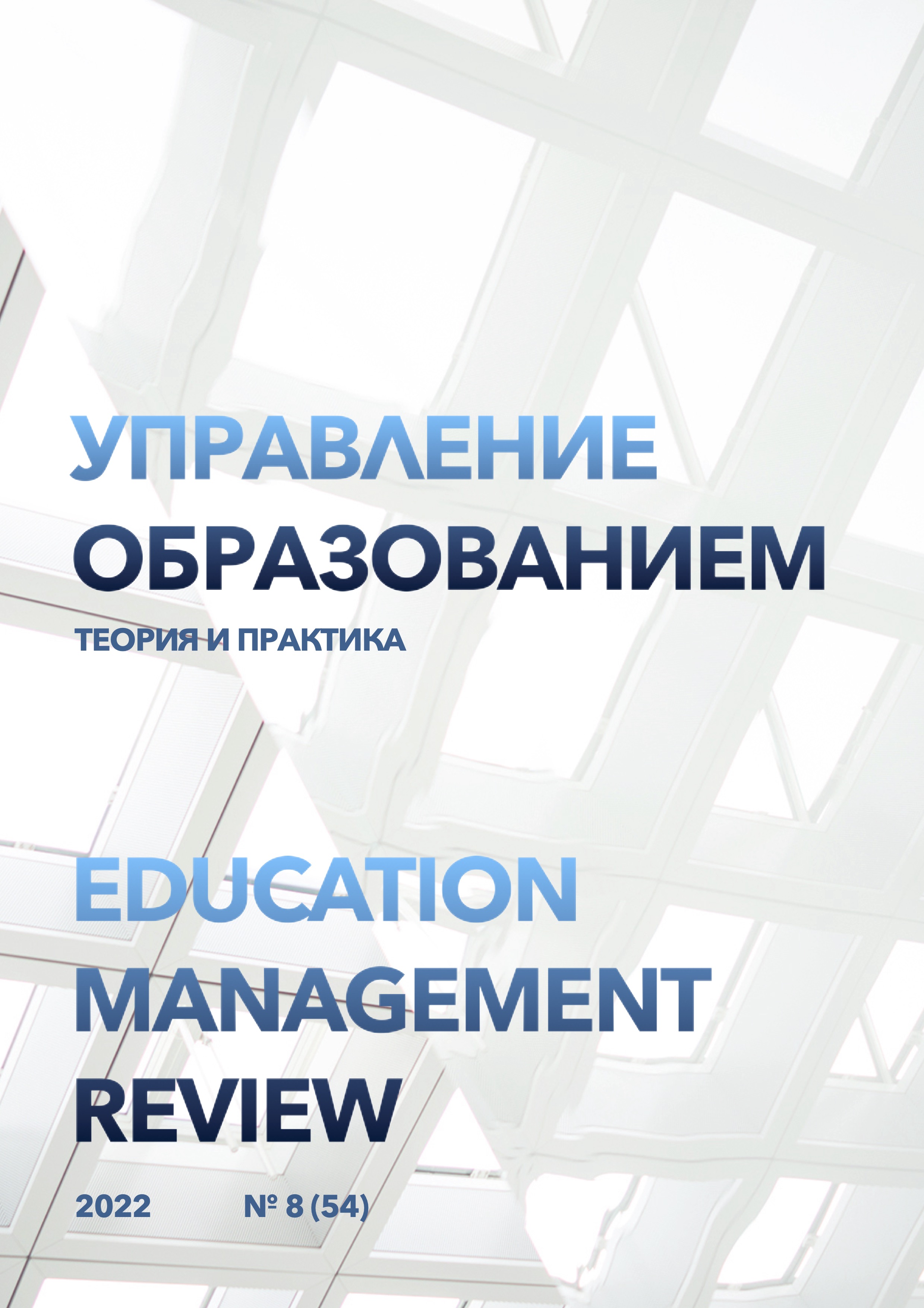Improving the effectiveness of teamwork in overcoming stress in the project approach
DOI:
https://doi.org/10.25726/d4973-8858-4989-pKeywords:
stress, team, overcoming, functioning, workAbstract
Opportunities to overcome stress in each profession are usually characterized by opportunities for selfrealization. A particular problem is the assessment of stress levels. In particular, it is assumed that stress is a derivative of workload at work. In this regard, the possibility of forming a stress assessment is extremely important when achieving team performance. Team stress in the assessment should be considered not as synergistic, but according to special functions and properties. The novelty of the study is determined by the possibility of correlating stress as an integral characteristic. The authors show that modern business has completely switched to a project approach, when each of the stages of business development is characterized by a different degree of applicability of the team. The article shows that the key characteristics of overcoming stress in teamwork is the correction of the state of each of the team members. The authors apply the developed methodology for determining the conformity of professional activity in order to balance the team as much as possible and ensure the most productive work. The practical significance of the study is determined by the structure of the use of anti-stress technologies in the work of large enterprises during their restructuring or optimization during economic restructuring.
References
Backé, E.-M., Seidler, A., Latza, U., Rossnagel, K., & Schumann, B. (2012). The role of psychosocial stress at work for the development of cardiovascular diseases: A systematic review. International Archives of Occupational and Environmental Health, 85(1), 67–79. https://doi.org/10.1007/s00420-011-0643-6
Cervinka, R. (1993). Night shift dose and stress at work. Ergonomics, 36(1–3), 155–160. https://doi.org/10.1080/00140139308967867
Cieślak, I., Kielan, A., Olejniczak, D., Panczyk, M., Jaworski, M., Gałązkowski, R., … Mikos, M. (2020). Stress at work: The case of municipal police officers. Work, 65(1), 145–152. https://doi.org/10.3233/WOR-193067
Fillion, L., Desbiens, J.-F., Truchon, M., Dallaire, C., & Roch, G. (2011). Stress at work in nurses providing end-of-life palliative care according to care settings [Le stress au travail chez les infirmières en soins palliatifs de fin de vie selon le milieu de pratique]. Psycho Oncologie, 5(2), 127–136. https://doi.org/10.1007/s11839-011-0321-7
Gafarov, V. V, Gromova, E. A., Panov, D. O., Gagulin, I. V, & Gafarova, A. V. (2019). Effect of stress at work on the risk of cardiovascular diseases among the population of 25-64 years in Russia/Siberia (WHO program “MONICA-psychosocial”). Terapevticheskii Arkhiv, 91(2), 13–18. https://doi.org/10.26442/00403660.2019.01.000022
Jabłkowska, K., & Borkowska, A. (2005). Evaluation of the intensity of stress at work and burnout syndrome in the managers [Ocena nasilenia stresu w pracy a cechy zespołu wypalenia zawodowego u menedżerów]. Medycyna Pracy, 56(6), 439–444.
Knežević, B., & Belošević, L. (2006). Stress at work among military doctors: A preliminary study [Stresori na radnom mjestu vojnih liječnika: Preliminarno istraživanje]. Acta Medica Croatica, 60(4), 309–314.
Knežević, B., Golubić, R., Milošević, M., Matec, L., & Mustajbegović, J. (2009). Hospital healthcare workers and stress at work: Study in zagreb [Zdravstveni djelatnici u bolnicama i stres na radu: Istraživanje u zagrebu]. Sigurnost, 51(2), 85–92.
Kruczek, A., & Basińska, M. A. (2018). Coping humor for the relationship between a sense of stress at work and job satisfaction [Radzenie sobie przez humor dla relacji między stresem w pracy a satysfakcją zawodową]. Medycyna Pracy, 69(6), 621–631. https://doi.org/10.13075/mp.5893.00753
Lakshmi Narahari, C., & Koneru, K. (2018). Stress at work place and its impact on employee performance. International Journal of Engineering and Technology(UAE), 7(2), 1066–1071. https://doi.org/10.14419/ijet.v7i2.7.12229
Lennartsson, A.-K., Theorell, T., Kushnir, M. M., Bergquist, J., & Jonsdottir, I. H. (2013). Perceived stress at work is associated with attenuated DHEA-S response during acute psychosocial stress. Psychoneuroendocrinology, 38(9), 1650–1657. https://doi.org/10.1016/j.psyneuen.2013.01.010
Lin, K.-C., Huang, C.-C., & Wu, C.-C. (2007). Association between stress at work and primary headache among nursing staff in Taiwan: CME. Headache, 47(4), 576–584. https://doi.org/10.1111/j.1526-4610.2007.00759.x
Loikiene, O., & Pileckaite-Markoviene, M. (2013). The styles of coping with stress at work among high school teachers and secondary school lecturers [Aukštųjų mokyklų dėstytojų ir bendrojo ugdymo mokyklų mokytojų darbe patiriamo streso įveikos stiliai]. Pedagogika, 109, 78–85.
Martinez, M. C., & Fischer, F. M. (2009). Stress at work among electric utility workers. Industrial Health, 47(1), 55–63. https://doi.org/10.2486/indhealth.47.55
Petereit-Haack, G., Hirt, J., & Bolm-Audorff, U. (2015). Psychosocial stress at work and cardiovascular risk factors among urban bus drivers [Psychische Arbeitsbelastungen und Herz-KreislaufRisikofaktoren bei Busfahrern im öffentlichen Nahverkehr]. Zentralblatt Fur Arbeitsmedizin, Arbeitsschutz Und Ergonomie, 65(6), 328–333. https://doi.org/10.1007/s40664-015-0061-9
Potocka, A., & Merecz-Kot, D. (2010). What do we know about psychosocial risks at work? Part II. The analysis of employee’s knowledge of sources and consequences of stress at work [Co wiemy o psychospołecznych zagrożeniach w środowisku pracy? Cześć ii. Badanie świadomości pracowników]. Medycyna Pracy, 61(4), 393–411.
Prodromou, M., Papageorgiou, G. N., Themistocleous, S., Stergiou, C., & Lavranos, G. (2019). Boosting the skills of youth for dealing with stress at work: Results of boostress study. Hellenic Journal of Nursing, 58(1), 71–77.
Raczkiewicz, D., Bojar, I., Wdowiak, A., Rzeźnicki, A., & Krakowiak, J. (2019). Stress at intellectual work and cardiovascular diseases in women at non-mobility working age. Annals of Agricultural and Environmental Medicine, 26(3), 456–461. https://doi.org/10.26444/aaem/105142
Siegrist, J., Lunau, T., Wahrendorf, M., & Dragano, N. (2012). Depressive symptoms and psychosocial stress at work among older employees in three continents. Globalization and Health, 8. https://doi.org/10.1186/1744-8603-8-27
Thoondee, K. D., & Oikonomou, A. (2018). Using virtual reality to reduce stress at work. In Proceedings of Computing Conference 2017 (Vol. 2018-January, pp. 492–499). https://doi.org/10.1109/SAI.2017.8252142




